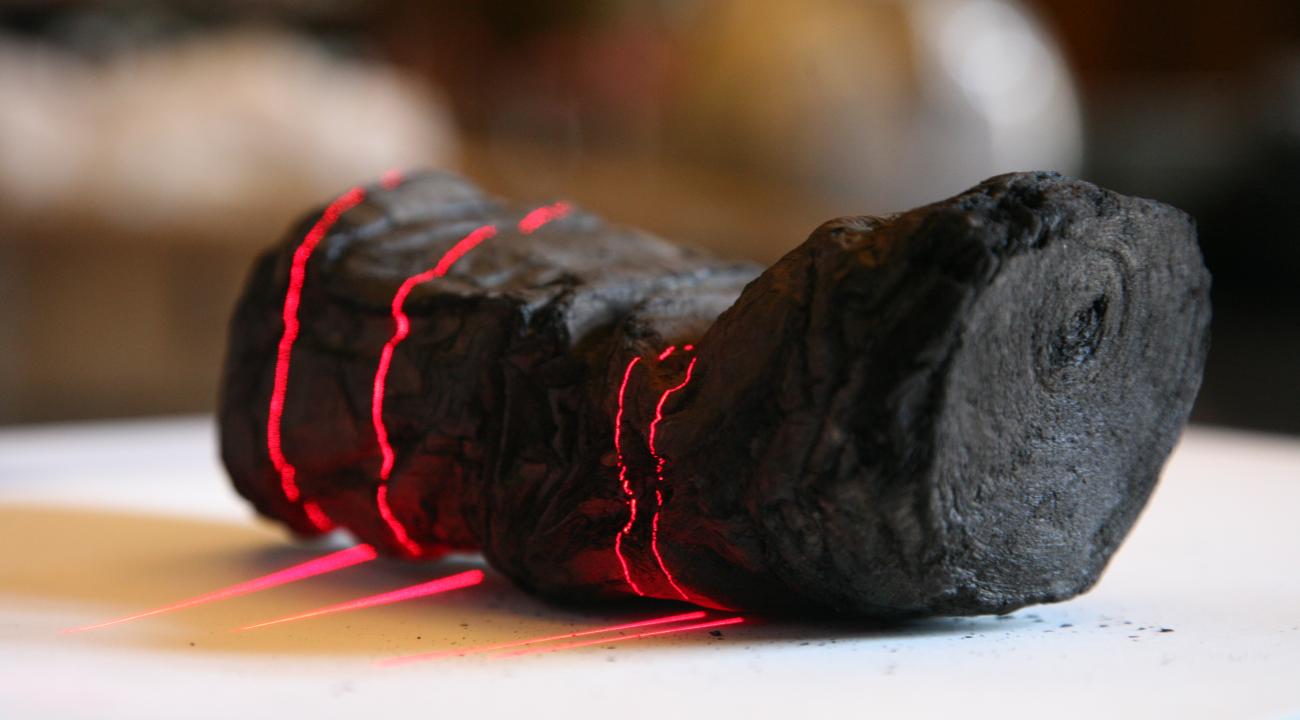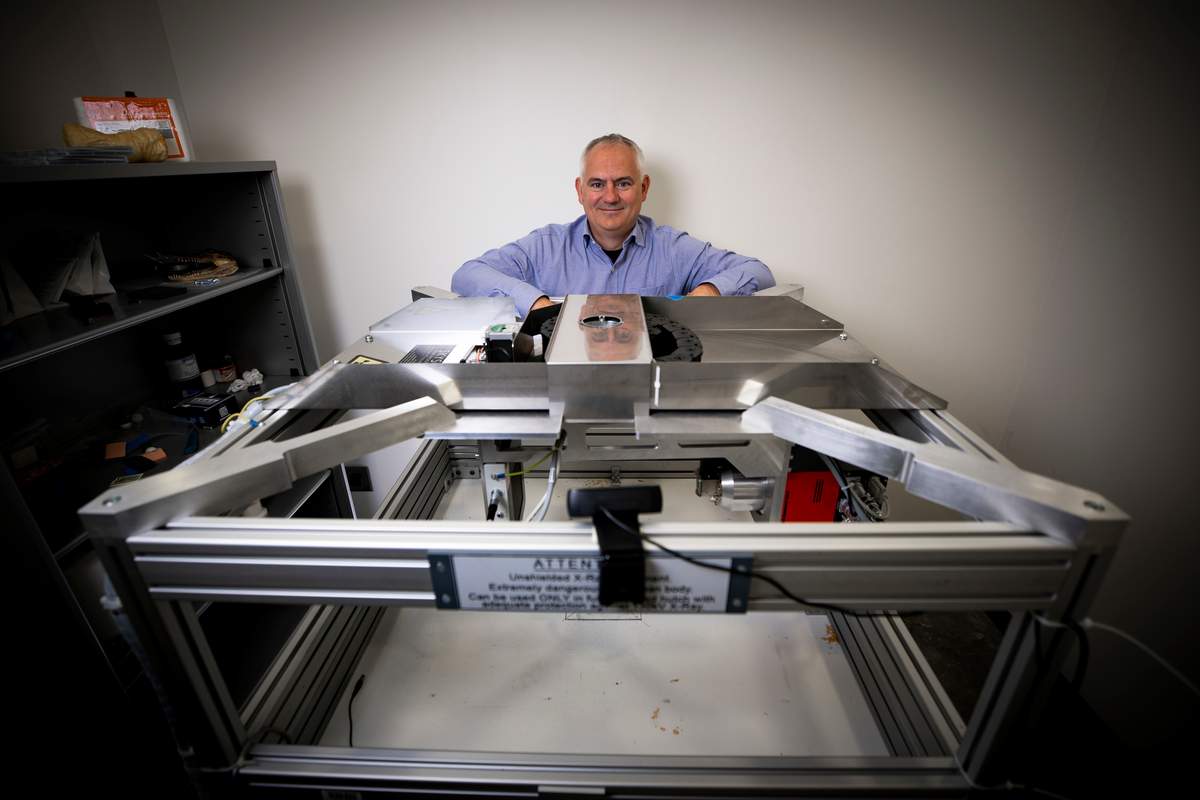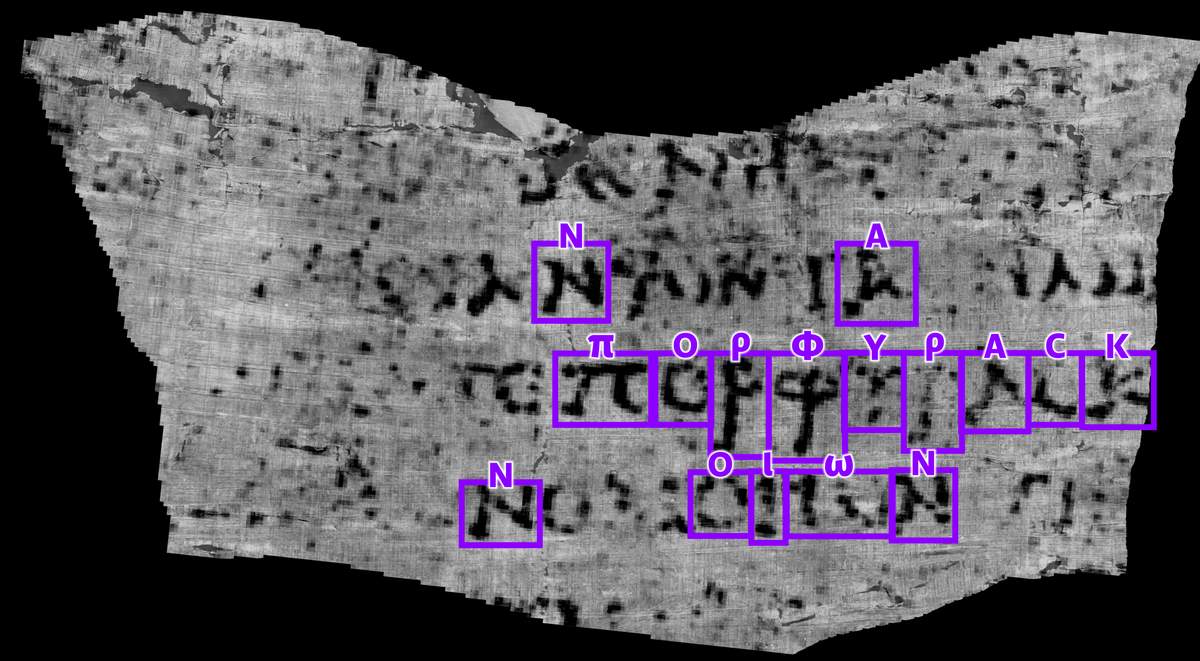Roughly 2,000 years ago, Mount Vesuvius erupted, destroying the Roman cities of Pompeii and Herculaneum. Now a group of scientists is working to decode one of the great mysteries of that time – the scrolls of Herculaneum.
In 1752, workers digging in Herculaneum uncovered a home that had belonged to a rich person. Inside, under a layer of volcanic mud, workers discovered over 600 scrolls – the largest library of the ancient world. Most of the scrolls were made from papyrus – a paper-like material. The heat from the volcano had burned the scrolls so much that they looked like chunks of charcoal.
The scrolls were so fragile that just touching them could make them fall apart. So scientists have been looking for ways to read the scrolls without opening them.

(Source: EduceLab, via UK.)
Brent Seales, a computer scientist at the University of Kentucky has been working on this for over 20 years.
Dr. Seales developed a method of using a CT (computed tomography) scanner to take 3D X-ray images of a papyrus scroll. Then he uses a computer program to “unroll” the scroll, and get pictures of what it looks like on the inside. In 2016, his team used this method to read a burned scroll found near the Dead Sea.
But the scrolls from Herculaneum are much harder. The ink is made from charcoal and water, and doesn’t show up well in CT scans. Still, Dr. Seales hoped to be able to find the writing on the scrolls by looking for places where the papyrus was rougher. He trained an AI program to look for these patterns.

(Source: Pete Comparoni, UK Photo, via UK.)
Though Dr. Seales was making progress, it was slow going. Then Dr. Seales met with two businessmen. They had the idea of creating a contest for decoding the scrolls.
The contest, called the Vesuvius Challenge, was announced in March. Dr. Seales released his images, and the computer code he used to unroll the scrolls. The contest offered large prizes to people who met certain challenges in decoding the scrolls.
About 1,500 people have taken part in the contest. These people are sharing information as they make progress, so everyone can build on those ideas.
In August, Casey Handmer found a pattern that revealed where the ink had been on the scrolls.

(Source: Vesuvius Challenge, via UK.)
Following Mr. Handmer’s lead, Luke Farritor, a 21-year-old student at the University of Nebraska, created an AI program that found a whole word: “πορφύραc”, or “porphyras” which means “purple”. This was the first word ever read from these ancient scrolls.
Soon afterward, Youssef Nader, in Germany, used a different method to find the same word. For their efforts, Mr. Handmer and Mr. Nader each won $10,000. Mr. Farritor won $40,000.
Now people are eagerly working to earn the contest’s $700,000 top prize, which is for decoding four longer sections of the scroll by December 31. The people behind the contest say that, with all the recent progress, it’s likely that someone will win this prize, too.
“For me, reading words from within the Herculaneum scrolls is like stepping onto the moon,” Dr. Seales says. “Now it is time to explore.”
